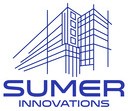In architecture, virtual reality (VR) refers to the visualization and interaction of architectural designs using immersive 3D simulations. With Virtual Reality in architecture, architects and clients can examine virtual models of buildings through virtual reality, experiencing the materials, lighting, and spatial layouts as if they were real. This technology, combined with innovation in modern building design, creates a shared, interactive environment for examining and improving design concepts, improving client presentations, and fostering better stakeholder engagement.
Virtual Reality has several transformative effects on architecture:
- Enhanced Visualization: By enabling users to experience designs in a completely immersive 3D environment, virtual reality (VR) helps architects and clients grasp spatial relationships and design aspects more precisely and intuitively.
- Real-Time Design Adjustments: Within the virtual environment, architects may instantly make and examine changes to their designs, expediting the process and facilitating quick iterations and feedback.
- Improved Client Communication: Clients can explore virtual models of their future spaces, leading to clearer understanding and better alignment with their vision, reducing the risk of misunderstandings.
- Streamlined Collaboration: By providing a shared virtual area for examining and debating designs, it helps architects, engineers, contractors, and clients better coordinate, which enhances project alignment and efficiency.
- Effective Marketing and Presentation: It provides a powerful tool for creating engaging virtual tours and presentations, helping firms stand out and attract clients by offering immersive previews of design projects.
- Future Trends for Architecture: Applications for virtual reality in architecture are anticipated to increase much more as the technology develops. These developments are probably going to enhance the architectural design process even more and provide better results for stakeholders and clients.
Conclusion
Our mission at Sumer Innovations is to fully utilize virtual reality in the architectural field. By providing architects with access to the newest virtual reality tools and technology, our platform enables them to produce inventive, immersive, and interactive design solutions in commercial building design, home design, and interior design. With Virtual Reality in architecture technology, we can help you explore new possibilities in architectural visualization, optimize design processes, or improve client presentations. Let us help you take your architectural adventure into the future.
Get in touch with us right now to find out how our virtual reality solutions may improve your architecture practice and revolutionize the design process. Experience a new level of design innovation by embracing virtual reality as the architecture of the future.




